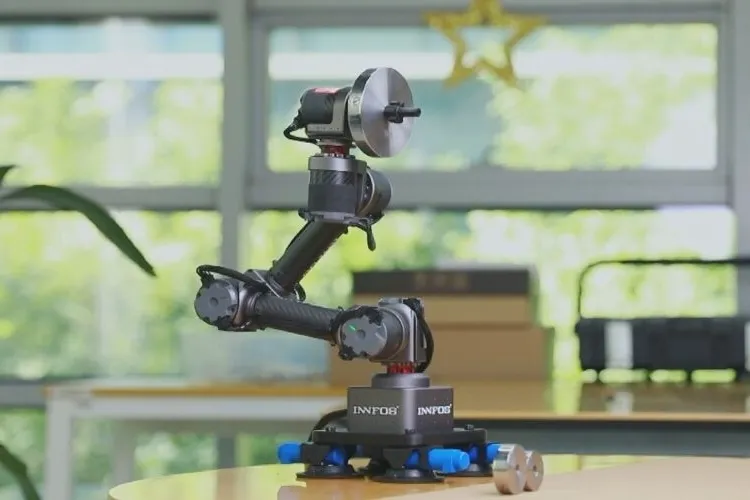The Innfos robot control board is a key technological innovation that has revolutionized the robotics industry. Designed for precision, reliability, and integration, this control board is a powerful tool for modern robotics applications, ranging from industrial automation to medical robotics and research. In this guide, we will explore every aspect of the Innfos robot control board, including its features, benefits, applications, and how it is shaping the future of robotics.
What is the Innfos Robot Control Board?
The Innfos robot control board is a high-performance hardware platform that acts as the brain of robotic systems. It manages motor control, sensor integration, and communication between various components in a robotic setup. By offering real-time processing and seamless connectivity, it ensures robots can perform complex tasks with precision and efficiency.
Key Features of the Innfos Robot Control Board
The Innfos robot control board is packed with advanced features that make it stand out in the robotics industry. Here are the most notable ones:
1. High-Precision Motor Control
The board supports a variety of motor types, including:
- Servo Motors
- Brushless DC (BLDC) Motors
- Stepper Motors
With its precise control algorithms, the board ensures smooth and accurate movements, essential for tasks like robotic arm manipulation and autonomous navigation.
2. Real-Time Processing
Equipped with advanced microcontrollers, the Innfos robot control board delivers real-time processing capabilities. This allows for:
- Minimal latency in executing commands
- Enhanced responsiveness for dynamic environments
3. Multi-Protocol Communication
To ensure seamless integration into different systems, the control board supports multiple communication protocols, such as:
- CAN Bus: Ideal for industrial automation systems.
- EtherCAT: For real-time data exchange in multi-axis robotic setups.
- UART/SPI: For simple and direct peripheral connections.
4. Integrated Motor Drivers
The Innfos robot control board features built-in motor drivers, eliminating the need for additional components. These drivers handle:
- Voltage regulation
- Current control
- Thermal management
5. Compact and Modular Design
Its compact size and modular architecture make it ideal for:
- Mobile robots
- Robotic arms
- Space-constrained applications
6. Robust Safety Features
The board includes multiple safety mechanisms, such as:
- Over-current protection
- Over-voltage protection
- Thermal shutdown features
These safeguards ensure reliable and safe operation, even in demanding environments.
7. Programmable Firmware
Users can customize the board’s functionality by updating its firmware. It supports popular programming languages and development environments, making it suitable for beginners and experts alike.
Technical Specifications of the Innfos Robot Control Board
Here’s an overview of the technical specifications that make the Innfos robot control board a powerful solution for robotics:
1. Power Supply
- Voltage Range: 12V to 48V DC
- Power Efficiency: Over 90%, ensuring optimal energy utilization
2. Communication Interfaces
- CAN Bus: High-speed data exchange
- EtherCAT: Low-latency communication for complex systems
- UART/SPI: For peripheral device integration
3. Processing Unit
- Equipped with a 32-bit ARM Cortex-M processor or equivalent, enabling high-speed computations.
4. Motor Control Capacity
- Supports multiple control modes, including position, velocity, and torque control.
- Maximum current handling: Up to 10A, depending on the motor type.
5. Dimensions and Weight
- Compact design: Typically under 200mm x 150mm x 50mm
- Lightweight: Less than 1kg
Applications of the Innfos Robot Control Board
The versatility of the Innfos robot control board makes it a perfect fit for a wide range of applications. Here are some key areas where it excels:
1. Industrial Automation
In factories and manufacturing units, the board powers robots for:
- Assembly line tasks
- Welding and soldering
- Packaging and material handling
2. Medical Robotics
The board is instrumental in the development of:
- Surgical robots for minimally invasive procedures
- Assistive robots for rehabilitation and patient care
3. Research and Development
Used in labs and R&D centers, the Innfos robot control board supports:
- Prototyping of new robotic designs
- AI and machine learning integration for advanced functionalities
4. Autonomous Vehicles
The control board plays a crucial role in:
- Autonomous guided vehicles (AGVs) used in warehouses
- Drones for surveillance, delivery, and exploration
5. Educational Robotics
Educational institutions use the board for:
- Teaching robotics and programming
- Building simple to advanced robotic systems
Advantages of Using the Innfos Robot Control Board
The Innfos robot control board offers several advantages that set it apart from its competitors:
1. Versatility
- Compatible with various motors and sensors
- Suitable for diverse industries and applications
2. Efficiency
- High power efficiency reduces energy consumption
- Real-time processing ensures smooth operation
3. Ease of Integration
- Plug-and-play design simplifies installation
- Pre-configured libraries and drivers save development time
4. Reliability
- Built with durable materials to withstand harsh conditions
- Safety features protect against hardware failures
5. Cost-Effectiveness
- Offers premium features at a competitive price
- Reduces additional hardware costs due to its integrated design
Also Read: Inspiring Story of Malia Manocherian
How to Use the Innfos Robot Control Board
1. Installation
- Securely mount the board in the robot’s chassis.
- Connect motors, sensors, power supply, and communication interfaces.
2. Programming
- Use compatible software tools or development environments.
- Configure the firmware to match your specific requirements.
3. Testing and Calibration
- Test communication between the board and other components.
- Calibrate motor control settings for optimal performance.
4. Maintenance
- Regularly update the firmware.
- Inspect connections and monitor performance using diagnostic tools.
Future Trends in Robotics and the Role of the Innfos Robot Control Board
As robotics continues to evolve, control boards like the Innfos robot control board will play an increasingly critical role. Here are some trends shaping the future:
1. Artificial Intelligence Integration
The Innfos robot control board can integrate with AI algorithms, enabling robots to:
- Learn from their environment
- Make decisions autonomously
2. Internet of Things (IoT)
Robots connected via IoT can:
- Communicate with other machines
- Optimize workflows in real-time
3. Energy Efficiency Improvements
Future iterations of the board will likely focus on:
- Enhanced energy efficiency
- Longer operational lifespans for battery-powered robots
4. Advanced Safety Features
Next-generation control boards will include:
- Predictive maintenance capabilities
- Advanced fault detection and recovery mechanisms
Why Choose the Innfos Robot Control Board?
When selecting a robot control board, it’s essential to prioritize features, compatibility, and reliability. The Innfos robot control board excels in all these areas, offering:
- High performance for demanding tasks
- Seamless integration into existing systems
- A cost-effective solution for advanced robotics
Conclusion
The Innfos robot control board is a game-changer in the field of robotics. Its precision, versatility, and reliability make it the ideal choice for a wide range of applications, from industrial automation to education. By understanding its features and capabilities, users can unlock the full potential of their robotic systems, paving the way for innovation and efficiency.
Whether you are developing a robotic arm, an autonomous vehicle, or a surgical robot, the Innfos robot control board provides the foundation for success in modern robotics. As technology advances, this control board will remain a cornerstone of cutting-edge robotic solutions, ensuring a future where robots are smarter, more efficient, and more capable than ever before.



